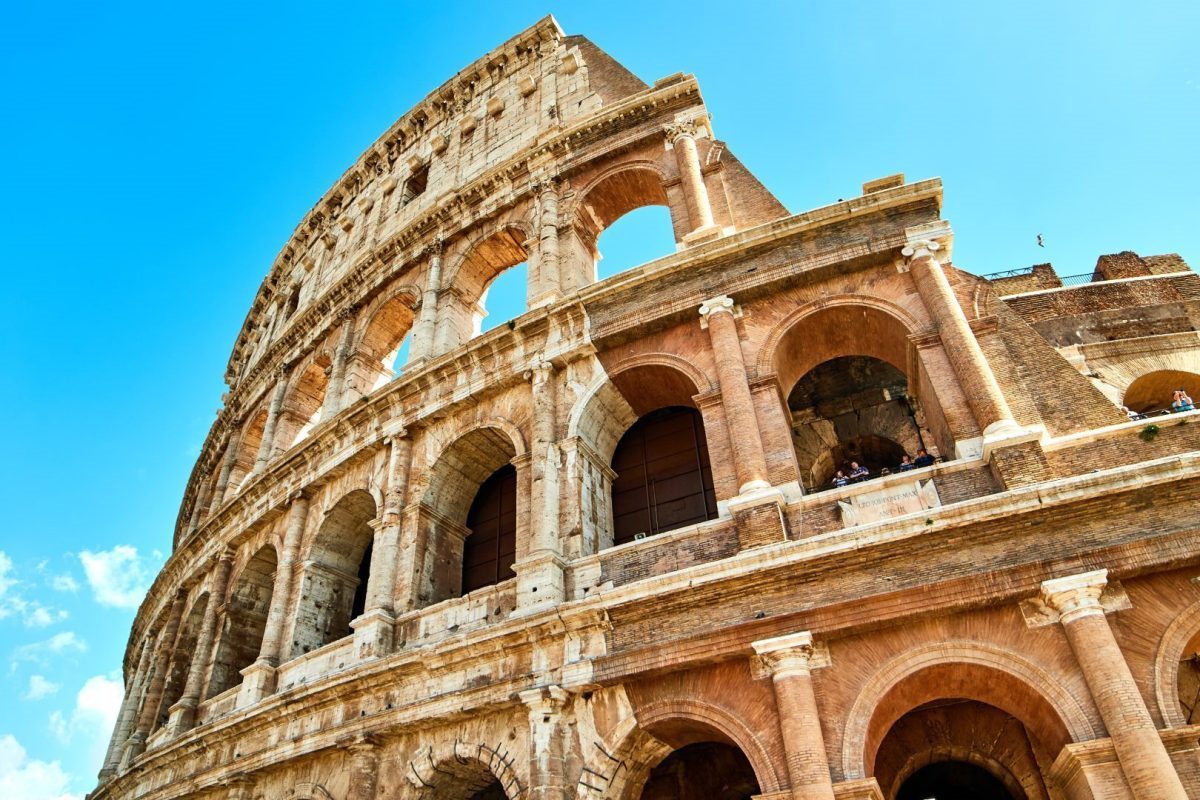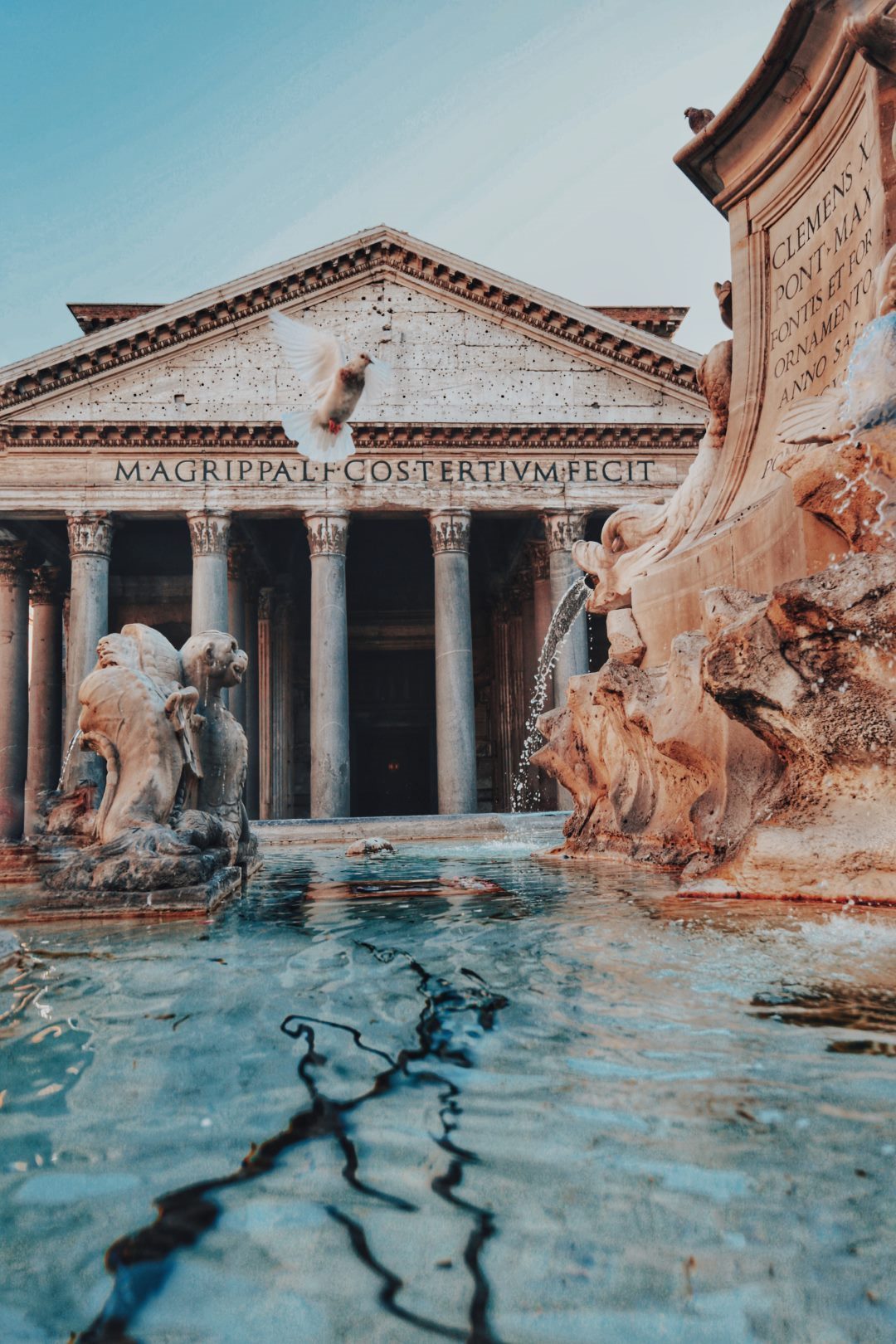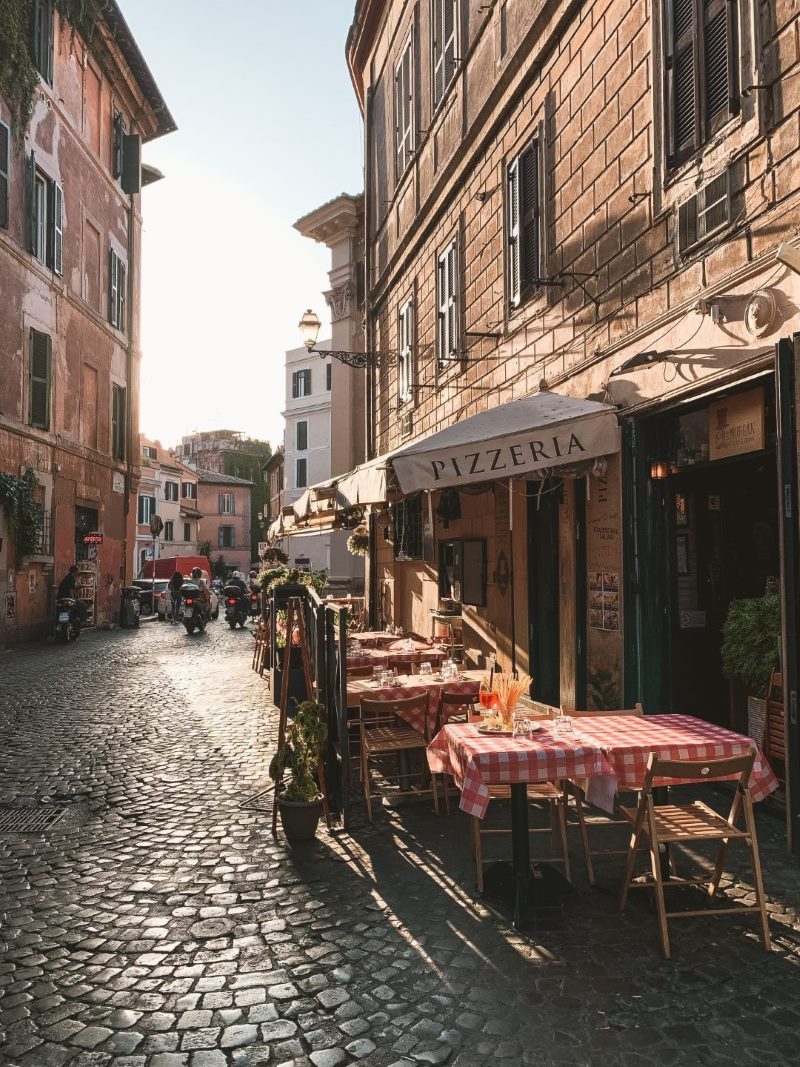How to Plan Your Walking Tour of Rome by Night Max 6 Pax
Whether you’re a first-time visitor or a regular traveler to Rome, witnessing the city’s iconic landmarks dramatically lit without daytime crowds is an experience you wouldn’t want to miss. We recommend this evening walking tour that will take you past Rome’s most famous monuments and provide you with insightful commentary about the city’s history and culture.Overview
Rome is impressive by day, but it reveals its romantic side only after sunset. With this evening tour, you’ll see the city’s most iconic landmarks lit up in all their glory. You’ll stroll past the Spanish Steps, Trevi Fountain, and the Pantheon, admiring their beauty and learning about their history and lore with your expert guide. This tour will also take you through the ancient Forum and Colosseum, which will be breathtaking to witness under the moonlight. The walk will culminate with you having some refreshing gelato while enjoying the Eternal City.What’s Included
This tour package includes an expert guide, ice-cream (gelato), pickup, and drop-off.Meeting and Pickup
You’ll meet your guide near Babington’s Tea Rooms at the bottom of the Spanish Steps. The Tour ends at the Colosseum. (We do not enter the Colosseum).Why take the Walking Tour of Rome by Night Max 6 Pax?
If you’re still wondering whether or not this tour is for you, here are some reasons why we think it’s worth your time and money:1. Experience Romance in Rome:
The daytime hustle and bustle do not create the same ambiance as seeing Rome at night, when the bustling crowds have thinned out, and the city’s romantic atmosphere sets in.2. Stunning Night Views:
Rome’s most famous landmarks, including the Pantheon, Colosseum, and Trevi Fountain, are breathtaking in the evening’s cool and quiet hours.3. Guided Tour:
You’ll have an expert guide who will provide you with insightful commentary about Rome’s history, culture, and architecture, giving you a comprehensive understanding of the city’s past and present.4. Authentic Italian Gelato:
You’ll have the opportunity to sample some of Rome’s Best Gelato while exploring the Eternal City, providing you with an authentic, taste of Italy5. Small Group Tour:
The walking tour of Rome limits the group size to six people, ensuring that you’ll have a personalized experience that includes attention from your tour guide.Things to Know Before You Book
Before booking your walking tour of Rome by night, here are some essential things to know.1. Availability:
The evening walking tour runs daily, starting at 7.00 PM, and lasts for approximately three hours2. Group Size:
Since the group size is limited to six people, you’re advised to book in advance to avoid missing out.3. What to Bring:
Wear comfortable walking shoes and wear clothing that is suitable for the day’s weather conditions.4. Language:
The guides speak English, so you don’t need to worry about communication barriers.5. Age Limit:
You must be at least twelve years old to join this tourHow to Book
You can book the walking tour of Rome by night Max 6 Pax via the following link book the tour here. Enter your travel dates, the number of people in your group, and proceed to check out. You will receive a booking confirmation via email.Book Your Tour Now
Rome is one of the most beautiful cities in the world, and the walking tour of Rome by night Max 6 Pax is an incredible way to see the Eternal City in all its glory. This tour will take you past some of Rome’s most famous landmarks and provide you with a unique perspective on the city’s history and culture. So, book your walking tour of Rome by night Max 6 Pax today and get ready for an unforgettable evening adventure!
FAQ about Rome
Rome is a world-famous city with a rich history, culture, architecture, and cuisine, attracting millions of tourists every year. It’s a city of art, fashion, and exceptional beauty, but it can also be overwhelming and chaotic for the first-time visitors. That’s why we’ve put together a comprehensive FAQ to help you plan your trip to Rome, explore its highlights, and make the most of your stay.1. What is Rome famous for?
Rome is famous for a lot of things, including its ancient history, particularly the Roman Empire, which left its mark on the city with incredible ruins and landmarks like the Colosseum, the Pantheon, and the Roman Forum. The city is also famous for its religious significance as the center of the Catholic faith, with iconic sites such as St. Peter’s Basilica, the Vatican Museums, and the Sistine Chapel. Rome is also known for its world-class art galleries, museums, and palaces, as well as its picturesque neighborhoods, piazzas, and gardens. Finally, Rome is a culinary paradise, with delicious pasta, pizza, gelato, and wine that have conquered the world.2. When is the best time to visit Rome?
Rome is a fantastic city to visit year-round, but the ideal time depends on what you want to see and do. The high season is from April to October, with peak crowds in July and August, when the weather is hot and humid, and many locals go on vacation. Spring (March to May) and fall (September to November) are excellent seasons to visit, with mild weather, fewer crowds, and lower prices. Winter (December to February) can be cold and rainy but also very atmospheric, with Christmas and New Year’s celebrations and fewer tourists.3. How long should I stay in Rome?
To see the main highlights of Rome, you need at least three to four days, but ideally, you should plan to spend a week or more to fully immerse yourself in the city’s charm and history. Rome is a vast city, and each neighborhood has its vibe, history, and treasures. Besides the famous landmarks, don’t miss out on the less touristy areas, such as Trastevere, Monti, Testaccio, or EUR, where you can experience the local lifestyle, shops, bars, and restaurants.4. What language do they speak in Rome?
The official language of Rome is Italian, but English is widely spoken, especially in tourist areas and accommodations, restaurants, and museums. It’s always a good idea to learn some basic Italian phrases, such as “buongiorno” (good morning), “per favore” (please), and “grazie” (thank you) to show respect and appreciation to the locals and make your travel smoother.5. What is the currency used in Rome?
The official currency of Rome is Euro, like in most of the European Union countries. You can exchange money at banks, exchange offices, or ATMs (bancomat), but keep in mind that some places may charge commissions or have unfavorable exchange rates. Most shops, restaurants, and hotels accept credit cards, but it’s always useful to have some cash for small purchases or tips.6. Where can I stay in Rome?
Rome has a wide range of accommodations for all budgets and preferences, from luxury hotels to budget hostels, Airbnb rentals, and boutique apartments. The most popular areas to stay in Rome are the historic center, near the major landmarks, such as the Pantheon, Campo dei Fiori, or Piazza Navona. Other trendy neighborhoods are Trastevere, Monti, and Testaccio, which offer a more local and authentic experience. Keep in mind that Rome is a big city, and it’s essential to choose a location that suits your itinerary and travel style.7. How can I get around Rome?
Rome has an extensive public transportation system, including buses, trams, and metro lines. The main transport company is ATAC, and you can buy tickets at newsstands, tobacco shops, or machines at metro stations. A single ride costs 1.50 € and is valid for 100 minutes, with unlimited transfers on the same mode of transport. There are also numerous taxi companies, bike rentals, and electric scooters available, but keep in mind that traffic in Rome can be chaotic and that walking is often the best way to explore the city’s sights and hidden corners.8. What are the must-see landmarks in Rome?
Rome is home to countless landmarks and monuments, but some of the unmissable ones are: – The Colosseum: a massive amphitheater dating back to AD 72, where gladiator battles and other spectacles took place. – The Pantheon: a magnificent temple built in AD 118, famous for its giant dome and marble interior. – St. Peter’s Basilica: the world’s largest Catholic church and the centerpiece of the Vatican City, with masterpieces by Michelangelo and Bernini. – The Roman Forum: the site of ancient Rome’s political and commercial hub, featuring impressive ruins of temples, arches, and basilicas. – The Trevi Fountain: a Baroque masterpiece that attracts millions of visitors who throw coins into the water to ensure their return to Rome. – The Spanish Steps: a beautiful staircase leading to the Trinità dei Monti church, surrounded by shops, cafes, and a lovely view over Rome’s rooftops.9. What should I eat in Rome?
Rome is famous for its delicious and comforting cuisine, based on fresh and high-quality ingredients, such as tomatoes, olive oil, basil, and cheese. Some of the classic Roman dishes you should try are: – Carbonara: pasta with eggs, pancetta, pecorino cheese, and black pepper. – Cacio e Pepe: pasta with pecorino cheese and black pepper. – Amatriciana: pasta with tomato sauce, guanciale (cured pork cheek), and pecorino cheese. – Pizza: thin-crust pizza with tomato sauce, mozzarella, and various toppings. – Supplì: fried rice balls stuffed with mozzarella and tomato sauce. – Gelato: Italian-style ice cream, available in countless flavors and variations. – Espresso: strong and flavorful coffee, an essential part of Italian daily life.10. What are some useful tips for traveling to Rome?
Here are some tips to make your trip to Rome smooth and enjoyable: – Dress appropriately: Rome is a fashionable city, but it’s also respectful of its cultural and religious heritage, so avoid wearing shorts, mini-skirts, or sleeveless tops when visiting churches or holy sites. – Watch out for scams and pickpockets: Rome has its fair share of tourist traps, such as fake gladiators, flower vendors, or “free” tours that turn out to be expensive. Also, beware of pickpockets in crowded places or public transportation, and keep your belongings close. – Learn some Italian phrases: even if you don’t speak fluent Italian, learning some basic phrases can go a long way in showing respect and appreciation to the locals, who are generally friendly and welcoming to visitors. – Don’t overplan: Rome has so much to offer that it’s impossible to see everything in one trip, so prioritize the landmarks and activities that interest you the most, but leave some room for spontaneity and exploration. – Enjoy the dolce vita: Rome is not just a city of monuments and history but also a place to relax, indulge in delicious food and wine, people-watch, and enjoy the simple pleasures of life. So, slow down, savor the moment, and embrace la dolce vita.
How to Spend Your Time as a Tourist in Rome
When it comes to Italy, there is no place that attracts tourists like Rome. Nicknamed the ‘Eternal City’, Rome has a rich history and culture that can captivate anyone who visits. If you’re planning a trip to Rome, you’re in for a treat, but with so much to see and do, it’s easy to feel overwhelmed. In this guide, we’ll take you through some of the best ways to spend your time in Rome.Explore Ancient Rome
Rome’s ancient history is what sets it apart from other European cities. As a tourist, you can’t miss exploring the ancient ruins that still stand tall in the city. Here are a few must-visit ancient sites in Rome:The Colosseum
The most famous ancient site in Rome is, of course, the Colosseum. Spanning 620 by 513 feet, the Colosseum was capable of seating up to 80,000 people during ancient times, and it was where the gladiators put on their bloody shows. The Colosseum is open for visitors all year round, but if you want to skip the long lines, consider booking a skip-the-line ticket in advance.The Roman Forum
The Roman Forum was once the center of ancient Rome, where all the major events such as celebrations and trials took place. Today, the Forum is a sprawling excavation site that offers a glimpse into Rome’s past. You can book a guided tour of the Roman Forum to know more about its history.The Pantheon
The Pantheon is a marvel of ancient Roman engineering that has withstood the test of time. It was built in 118 AD, and it still stands as the world’s largest dome made of unreinforced concrete. Once a temple, today the Pantheon serves as a church, and visitors are welcome to explore its interiors.Visit Vatican City
Vatican City is not technically a part of Rome, but it is located within the city limits, and it attracts millions of visitors every year. Here are some of the must-visit sites inside Vatican City:St. Peter’s Basilica
Built between 1506 and 1626, St. Peter’s Basilica is one of the most impressive churches in the world. It is the burial site of St. Peter, the first Pope, and it boasts of masterpieces such as the dome designed by Michelangelo and Bernini’s altar canopy.The Sistine Chapel
The Sistine Chapel is another must-visit site within Vatican City. Michelangelo painted the ceiling of the Sistine Chapel in the early 16th century, making it one of the most celebrated works of art in history. Visitors are allowed inside the chapel, but photography is not allowed.Explore the Neighborhoods
Rome is made up of several distinctive neighborhoods, each with its own unique character. Here are a few of the neighborhoods you should visit:Trastevere
Trastevere is one of the oldest neighborhoods in Rome, and it offers a glimpse into the city’s past. With cobblestone streets, quaint piazzas, and cafes, Trastevere is a great place to grab a snack, people-watch, or simply take a leisurely stroll.Monti
Monti is a bohemian neighborhood with a vibrant nightlife scene. It is full of trendy boutiques, street art, and wine bars. Monti is also home to some of the best gelato shops in the city, so be sure to indulge your sweet tooth while you’re there.Testaccio
Testaccio is a neighborhood that celebrates Rome’s culinary traditions. With countless food markets, delicatessens, and restaurants, Testaccio is the place to go for an authentic Roman food experience.Experience the Local Culture
Rome is not just about ancient ruins and churches, but also about experiencing the local culture. Here are a few ways to dive into Rome’s local culture:Learn to Make Pasta
Italian cuisine is world-famous, and what better way to get to know it than learning the art of pasta-making? Take a cooking class and learn to make your own fresh pasta, tomato sauce, and tiramisu.Attend an Opera Performance
Opera is an integral part of Italy’s cultural heritage, and Rome has several theaters where you can attend an opera performance. The Teatro dell’Opera di Roma is one of the most prestigious theaters in the city, but there are smaller venues where you can catch a performance as well.Visit a Vineyard
Italy is famous for its wine, and there are several vineyards surrounding Rome that offer wine tours, tastings, and other activities such as grape harvesting. It’s a great way to get out of the city and enjoy the countryside.Final Thoughts
There’s no shortage of things to see and do in Rome, and this guide has only scratched the surface. Whether you’re interested in ancient history, art, food, or culture, Rome is a city that will keep you coming back for more. Remember to plan your trip in advance, especially if you’re visiting during peak season, and be sure to wear comfortable shoes because there’s a lot of walking to do.Table of Contents

